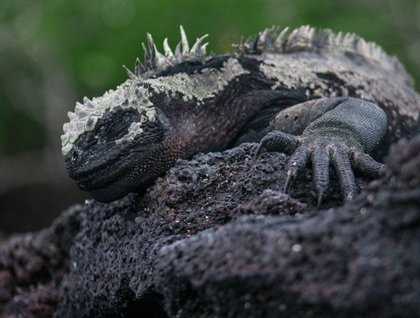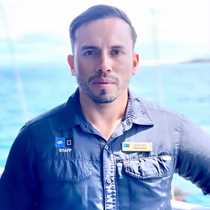Our Galapagos Expedition headed to the western islands of the enchanted archipelago, first visiting the largest island of all, Isabela. We were impressed by large volcanoes in the far distance and a group of dolphins on the calm ocean around the northern snout of this seahorse-shaped island.
We soon crossed the equator line and returned to the southern hemisphere again. We arrived to a great protected bay, known as Punta Vicente Roca, where the titan cliffs surrounded our visitor site. We decided that the best method of exploration at this site would be a Zodiac ride along the tuff cones of this young island. Afterwards, we went snorkeling and as soon as we got to the snorkeling site, we spotted a male orca, within the snorkeling site, possibly in search of pacific green sea turtles. All of the Zodiacs followed the orca for a while and got to see this beautiful black and white creature up close. After this exciting and unexpected encounter, we returned to the snorkeling site and saw many pacific green sea turtles, some resting in the bottom of the ocean and others just floating on the surface, getting very close to our Zodiacs. We were also lucky enough to spot couple of Galapagos penguins in the water.
We soon left our morning site and navigated to Fernandina Island, the youngest of the islands in the Galapagos. We had a dry landing at the only visitor site on this barren island, a place known as “Espinoza Point”, where a large number of marine iguanas were sitting right in the middle of our trail. During our hike, we spotted large colonies of marine iguanas, one of the endemic snakes in Galapagos curled up under the bushes, and nesting grounds of the endemic flightless cormorants. Fernandina offers the opportunity to move far back in time, to the remote Galapagos where species have had the opportunity to habituate and develop in abundance within their ecosystem.







